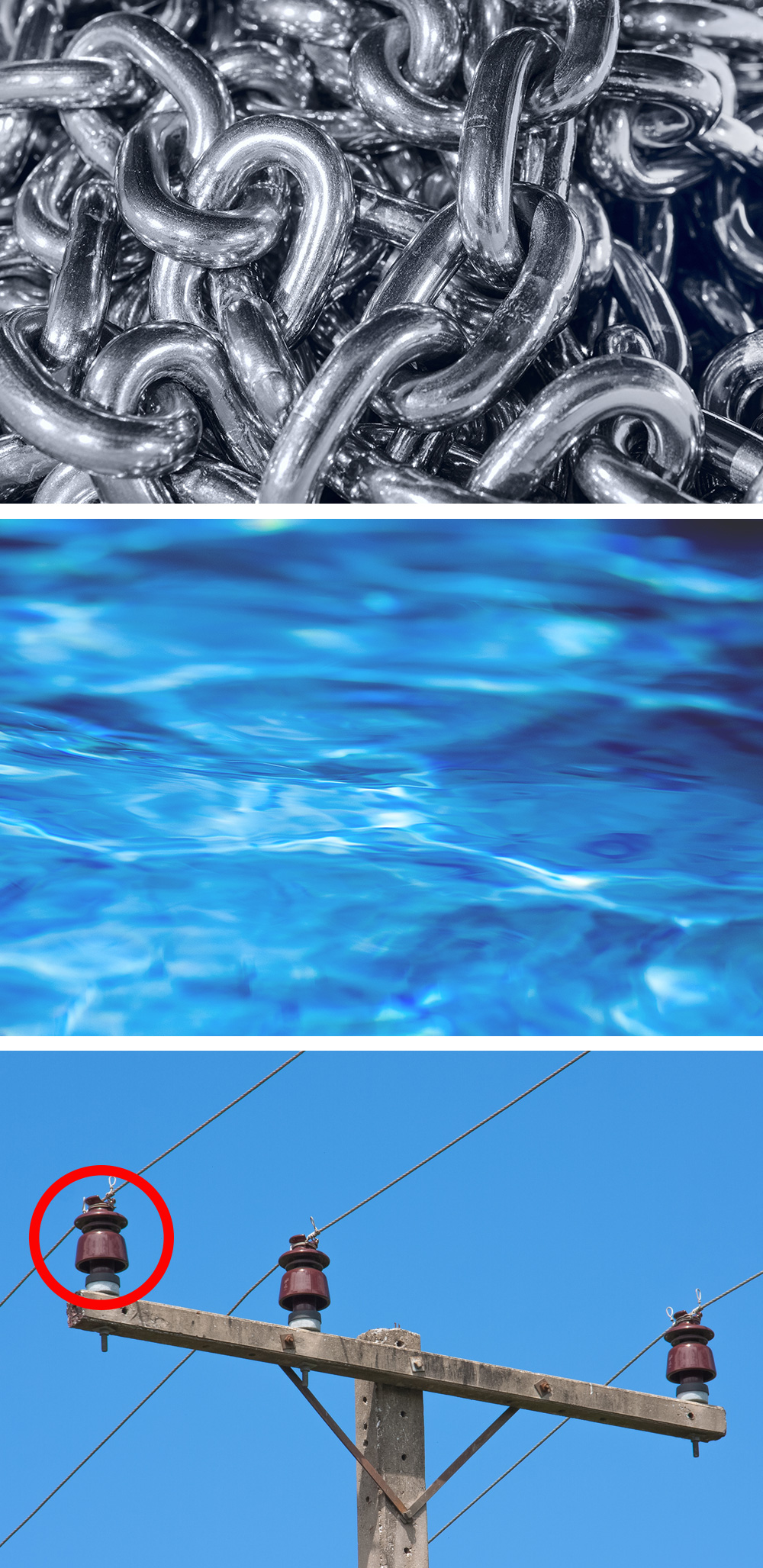Conductors and Insulators
 Conductors: materials that conduct electricity well. These materials have atoms with loosely bound electrons, so the electrons are free to jump from atom to atom and form a current. Common conductors include water and many types of metal, such as copper, aluminum, and steel. The human body is mostly water, which means you are an excellent conductor and, therefore, vulnerable to electrical current.
Conductors: materials that conduct electricity well. These materials have atoms with loosely bound electrons, so the electrons are free to jump from atom to atom and form a current. Common conductors include water and many types of metal, such as copper, aluminum, and steel. The human body is mostly water, which means you are an excellent conductor and, therefore, vulnerable to electrical current.
Insulators: materials with a high resistance to electricity. These materials have atoms with tightly bound electrons, so the electrons are less likely to jump around and form a current. Common insulators include plastic, rubber, ceramics, and fiberglass.
Anything can be a conductor—even a typically insulative material—at a high enough voltage or in just the right conditions. Watch out for conditions that may reduce resistance. Always be alert for potential paths to ground, and keep yourself, as well as tools and equipment, far away from them.

